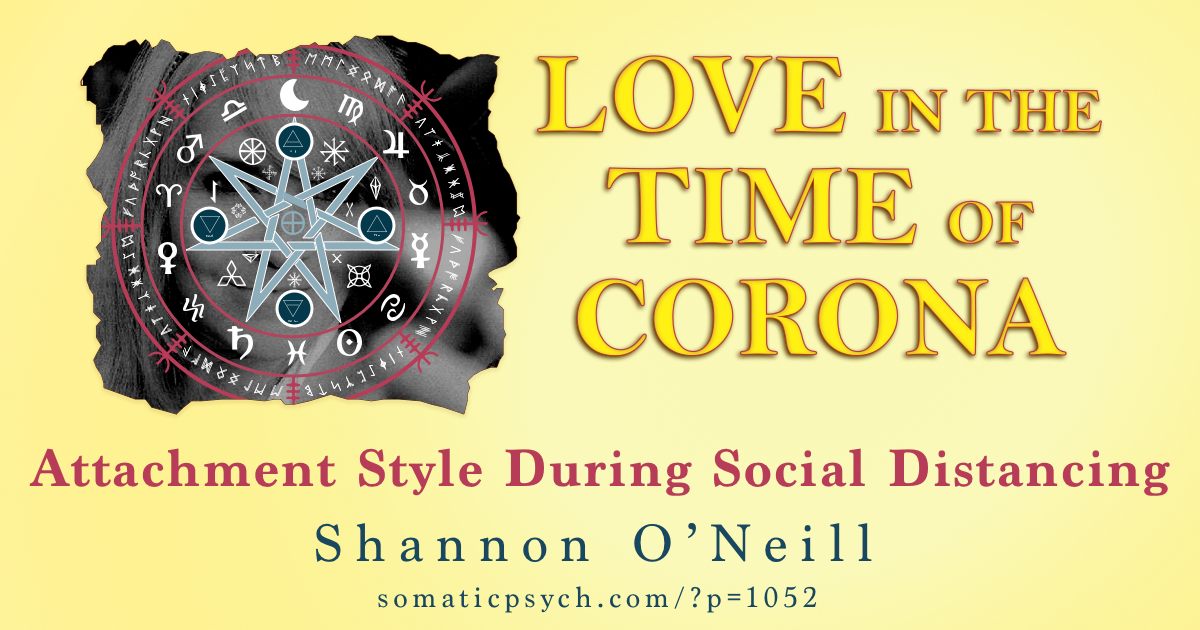Attachment Style During Social Distancing
 With social distancing and stay home orders, many are noticing their insecure attachment imprints emerging. Being that humans are essentially pack animals, both self-preservation and social engagement nervous systems are involved in our adaptation to life’s circumstances. The “wires” of these two systems can get crossed and/or dysregulated when a child is bonding in a family field that’s operating too far outside the boundaries of what’s natural. During the centuries of “civilization” and living in captivity, many have adapted insecure attachment styles to cope with parents who have been instinct injured and weak in emotional attunement.
With social distancing and stay home orders, many are noticing their insecure attachment imprints emerging. Being that humans are essentially pack animals, both self-preservation and social engagement nervous systems are involved in our adaptation to life’s circumstances. The “wires” of these two systems can get crossed and/or dysregulated when a child is bonding in a family field that’s operating too far outside the boundaries of what’s natural. During the centuries of “civilization” and living in captivity, many have adapted insecure attachment styles to cope with parents who have been instinct injured and weak in emotional attunement.
Thanks to the pioneering work of Mary Ainsworth, and John Bowlby, we now understand the biopsychosocial effect this has on many of our species. Attachment Theory was developed and researched to demonstrate that children develop an attachment style to adapt to a parent’s/caregiver’s ability to create a sense of security and attunement. When these attachment figures are impaired, the child will develop some degree of an insecure attachment style.
In addition to secure attachment, the three insecure styles are anxious/ambivalent, avoidant, and disorganized. These are adaptations or imprints, not inborn characteristics. These adaptations are exacerbated under the uncertainty and stress of a planet under quarantine and economic collapse. These are imprints of attachment. Therefore, people are experiencing states that are indicative of these attachment styles: Longing and loneliness (anxious/ambivalent); Isolation and emotional numbing (avoidant); and fear and dissociation (disorganized). These imprints can emerge individually or in combination.
Regardless of the varying imprint patterns we are experiencing, it is important to remember that their appearance is an opportunity to heal and update these older programs.
The therapy field has itself adapted and updated. Now there are clinicians trained to work with interpersonal neuroscience, intrapsychic family systems, and attachment wounds. These modalities utilize the excavation of these imprints to uncover the blueprint: Secure Attachment. Healing is natural. All we need is to be restored to our nature. All of nature’s organisms are equipped to adapt to all sorts of nonoptimal circumstances. Plants have ribosomes in their roots that help them transform toxins in the soil into nourishment for growth. They can serve as a model of adaptability. We can still thrive when we cannot change our surroundings. Survival in a culture in quarantine requires that we also “Bloom where we are planted.”
